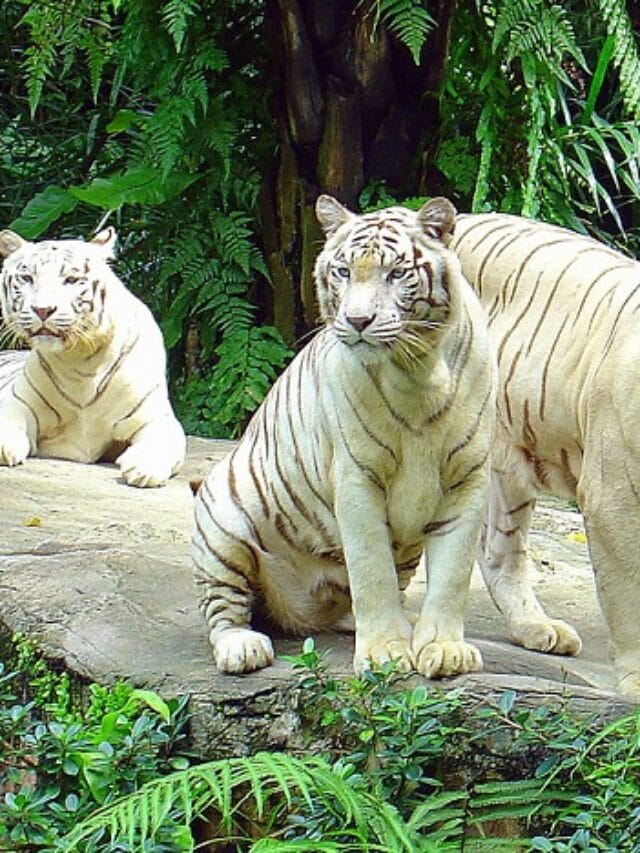Your cart is currently empty!

-> Top 10 Very Best Zoos in Africa :- (Do you want to know the very Best Zoos in the world ??)
Zoos in Africa – An All-Inclusive Travel Guide to Africa’s Bustling Wildlife Parks. Africa is known for its unmatched characteristic splendor, filled with wildlife, and unbelievable landscapes. More than the savannas, rainforests, and deserts, however, the continent houses some of the most distinctive and masterfully designed zoos. These do more than act just as zoos, which are fair places to visit with creatures.
They play a very significant role in preservation and instruct and investigate. From ensuring imperiled species to advancing biodiversity, African zoos have advanced into the modern educate, pulling in millions of guests each year. In this direct, we will take you on a point-by-point journey through the beat 10 zoos in Africa.
Each one is fascinating, advertising a wide range of encounters, educational opportunities, and a glimpse into the continent’s mind-boggling wildlife. The list is based on various factors, including animal welfare, visitor experience, conservation efforts, and their role in educating the public about wildlife.

1. Johannesburg Zoo:-
South Africa Located in the heart of South Africa’s biggest city, the Johannesburg Zoo is one of the most experience and most excellent zoos in Africa. For more than over a century since it opened in 1904, it covers 54 hectares (133 acres) with more than 300 species of animals, among which are many of Africa’s famous wildlife, including lions, elephants, giraffes, and rhinos.
Conservation and Education: The Johannesburg Zoo is realistically part of breeding programs for endangered species like the African wild dog, the Ethiopian wolf, and other species of primates. It also boasts an impressive collection of rare and endangered reptiles and terrestrial and aquatic animals. The zoo organizes educational programs for schools, advocating for interactive experience learning for children and adults alike on conservation activities.
Highlights: -Incredible collection of native African animals and amazing species worldwide. The African species that the zoo focuses on to conserve include the cheetahs, white rhinos, as well as African wild dogs. An incredible group of animals such as flamingos, zebras, and crocodiles, accompanied by themed presentations that create an African environment.
– The zoo is too home to the Johannesburg Zoo Establishment, which supports various conservation projects across Africa.
2. The Nairobi National Park and Giraffe Centre:–
Kenya Nairobi National Stop is unique since it’s the only national stop in the world located within a capital city. Fair a few kilometers from downtown Nairobi, it offers a really African safari encounter with the city horizon in the foundation. Whereas the stop itself is not a conventional zoo, it offers a mix of safari encounter with natural life preservation efforts.
Preservation and Education: The Nairobi National Stop is home to more than 100 species of warm-blooded animals, birds, and reptiles, including the endangered black rhino. In fact, it has been a safe haven for rhino conservation, as much effort is being made to protect these beautiful animals from poaching. The Giraffe Middle, located on the periphery of Nairobi, plays a very crucial role in protecting the endangered Rothschild giraffe. It offers a chance to get close to these beautiful animals, feeding them and even learning practically everything concerning their preservation.
Highlights: • A chance to see a variety of animals, among other lions, giraffes, zebras, and rhinos within a natural African environment. • Educational tours at the Giraffe Centre in order to become aware of giraffe preservation.
• Nairobi National Park is also one of the best places for watching birds; more than 400 species of birds have been documented. – Unique opportunity to view wildlife against the backdrop of a bustling city, Nairobi.
3. Addis Ababa Zoo:–
Ethiopia Addis Ababa Zoo is one of the biggest and most significant zoos in East Africa. Located in Ethiopia’s capital, the zoo occupies an area of about 125 hectares and houses over 200 species of animals. Conservation and Awareness: Notably, the zoo is also known for its focus on African species, especially those from Ethiopia.
The inborn species, among them the Ethiopian wolf, the gelada primate, and the Abyssinian cat are maintained with broad breeding programs. It also educates the public on the importance of conserving the biodiversity of Ethiopia, particularly in terms of the endangered species of the country.
Highlights: – Through a massive preservation effort to retain the endangered species of Ethiopia, which encompasses not only the Ethiopian wolf but also the Mountain Nyala. – They have an abundance of African primates, comprising primates, monkeys, and the world’s famous gelada baboons.
They seem to intuitively identify those that would involve its neighboring schools and communities in natural life conservation.
– The zoo falls within the greater efforts of Ethiopia to protect and restore its characteristic heritage.

4. The Royal Zootecnic Stop (Parc Zoologique de la Illustrious Zootecnic):–
Morocco The Illustrious Zootecnic Stop, or Rabat Zoo is located in the city of Rabat and constitutes one of North Africa’s most important zoological parks. With more than 1000 living beings, the stop covers over 30 hectares and enjoys an impressive African and foreign species variety.
It was opened in 2012 and is relatively young compared to other zoos in the landmass but acquired significance extremely fast. Conservation and Education: The zoo is part of some key conservation work, especially on the endangering species that occur in Morocco and previously.
It is famous for its breeding programs of species such as the Barbary lion; this is a subspecies native to Morocco but is now largely almost endangered. Highlights: – The park features the zoo’s African savanna show, containing giraffes, zebras, and gazelles in a habitat resembling the African savanna.
Impeccable programs focused on the protection of Morocco’s endemic species, including the Barbary lion and the critically endangered Saharan crocodile.
– A center on education and nature awareness with dedicated areas for learning almost all the region’s biodiversity. The more than 200 innate species in botanical gardens at the zoo make an immersive experience.
5. Cape Town’s Two Seas Aquarium:-
South Africa Although not literally a zoo, the Two Seas Aquarium in Cape Town is an important marine life center essential to preservation and natural instruction endeavors. Situated at the famous V&A Waterfront, the aquarium showcases the richness of marine life found in the Indian and Atlantic Seas, which converge around Cape Town.
Preservation and Education What makes the Two Seas Aquarium quite unique is that it focuses on marine conservation, mainly the protection of endangered species in the sea, such as the white shark and the leatherback turtles as well as other types of seabirds. It collaborates with analysts and preservationists who raise awareness regarding the natural hazards facing marine ecosystems.
Highlights: One of the most impressive collections of indigenous marine species- sharks, penguins, rays, and seals. – A popular “touch tank” in which visitors can engage marine life up close by touching ocean stars, crabs, and anemones. – Programs that take time to educate visitors nearly on feasible angling hones and sea conservation.
– Regular events and displays focusing on the health of marine ecosystems and how to keep them healthy.
6. The Zimbabwean National Zoo:-
Zimbabwe Situated in Bulawayo, the Zimbabwe National Zoo is one of the oldest zoos in Southern Africa, a fact that dates it back to the establishment of 1957. It provides 120 hectares and comprises more than 100 species of animals, ranging from large predators to small, fascinating creatures.
Conservation and Education: The Zimbabwe National Zoo focuses on preserving the common legacy of Zimbabwe and has a core on the country’s indigenous species. It plays an important role in guaranteeing the existence of African elephants, lions, and rhinos. The Zimbabwe National Zoo also collaborates with local and international institutions to facilitate assisting breed endangered species and combat the wildlife illegal trade.
Highlights: Complete collection of African species, including lions, elephants, cheetahs, and rhinos. – Extraordinary center on elephants, with breeding programs planned to guarantee the survival of these radiant animals. – Instructive shows that highlight the one of a kind biodiversity of Zimbabwe and Southern Africa.
– Near nearness to Hwange National Stop, one of Africa’s beat natural life saves, making it a awesome base for natural life enthusiasts.
7. Lagos Natural life Stop:–
Nigeria Lagos Natural life Stop, located in the city of Lagos is one of the many jewels of a zoo especially for those interested in encountering the vastness of Nigeria’s natural life. The main species found at the zoo are primates, reptiles, and birds.
Conservation and Education: The zoo will play a crucial role in educating the open nearly all of Nigeria’s wildlife and the importance of conservation. It focuses on the protection of the species that are vulnerable to poaching and environment destruction, such as the Nigerian giraffe and the Nigerian chimpanzee.
Points to know: The zoo hosts a vast range of African species, including lions, monkeys, panthers, and other species of monkeys. – Visitors can attend lectures on animal support, with knowledge about the role of species conservation.
– Educational tours and activities for establishing deeper appreciation towards biodiversity in Nigeria.
8. The Cairo Zoo:-
Egypt Cairo Zoo is one of the oldest in Africa and was established as far back as 1891. This zoo is right at the heart of Cairo and covers 80 acres. The zoo is known for holding populations of African as well as rare species; besides, giant cats, reptiles, and birds.
Preservation and education: It has a part of a few reproducing programs, on the whole especially for jeopardized species. In any case, it has encountered feedback in later decades regarding its offices and creature welfare, but continuous endeavors are underway to modernize the zoo and progress creature living conditions.
Highlights: A recorded zoo with a critical collection of creatures, counting African elephants, giraffes, and lions. – Follow-up modernization projects focused on carrying forward animal welfare and improving the zoo infrastructure.
– The zoo in Cairo is within close proximity and easy reach of all travelers who seek to explore wildlife in Egypt.

9. UShaka Marine World, South Africa:-
Durban While uShaka Marine World is not your standard zoo, it is worth mentioning Known for its excellent marine life demonstrations as well as numerous conservation efforts. Located at Durban, this place features various marine animals including dolphins and sharks besides teaching the public about sea conservation.
Conservation and Education: The stop centers around marine life preservation, especially with its programs pointed at ensuring the imperiled African penguin and marine turtles. The aquarium is included in protect operations, and numerous species are restored some time recently being discharged into the wild.
Highlights: Dolphin and seal appears that emphasize marine warm-blooded creature conservation. Different shows exhibiting sharks, stingrays, and an cluster of angle species.
– Creative and informative documentary films related to marine life and human activities affecting sea biodiversity.
10. Maputo Extraordinary Save:-
Mozambique Not being exactly a zoo, the Maputo Extraordinary Save provides an immersion participation into the wilds of Mozambique’s biodiversity. It is about fair south of the capital, Maputo, and offers safari-like experiences where visitors can see African elephants, zebras, and a variety of eland species.
Conservation and Education: The Maputo Uncommon Save is focused on the preservation of Mozambique’s distinct greenery and fauna, with specific interest in saving the dwindling elephant population in the area.
Key Highlights: · Typical save experience, with African wildlife in natural habitat. · Emphasis on elephant conservation and safety of threatened species.
High possibility of observing animal behavior and ordinary intelligences in the wild. Also, Africa’s zoos and wildlife parks offer far more than a fair chance owildlife creatures in walled-in areas.
They are centers of education, research, and conversation and provide important services for the conservation of some of the world’s most imperiled specithan justFromcity fulcrum of Johannesburg to the coastal power of Cape Town, these zoos express the incredible biodiversity and preservation efforts taking place in the entire continent.
Whether you are looking for learning about almost-extinct speciesageng unique species behaviors, or contributing to natural security, Africa’s zoos are one of the best places to achievtopis.
Conclusion:-
Here, above all are the very best content for the top 10 Very Best Zoos in Africa






